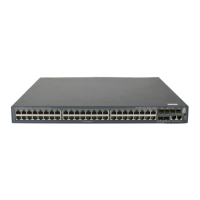123
Portal configuration
Portal overview
Introduction to portal
Portal authentication helps control access to the Internet. It is also called “web authentication.” A website
implementing portal authentication is called a portal website.
With portal authentication, an access device redirects all users to the portal authentication page. All
users can access the free services provided on the portal website; but to access the Internet, a user must
pass portal authentication.
A user can access a known portal website and enter a username and password for authentication. This
authentication mode is called active authentication. There is another authentication mode, forced
authentication, in which the access device forces a user who is trying to access the Internet through
Hypertext Transfer Protocol (HTTP) to log on to a portal website for authentication.
The portal feature provides the flexibility for Internet service providers (ISPs) to manage services. A portal
website can, for example, present advertisements and deliver community and personalized services. In
this way, broadband network providers, equipment vendors, and content service providers form an
industrial ecological system.
Extended portal functions
By forcing patching and anti-virus policies, extended portal functions help users to defend against viruses.
Portal authentication supports the following extended functions:
• Security check: Works after identity authentication succeeds to check whether the required
anti-virus software, virus definition file, and operating system (OS) patches are installed, and
whether there is any unauthorized software installed on the user host.
• Resource access restriction: A user passing identity authentication can access only network
resources in the quarantined area, such as the anti-virus server and the patch server. Only users
passing both identity authentication and security check can access restricted network resources.
Portal system components
A typical portal system comprises these basic components: authentication client, access device, portal
server, authentication/accounting server, and security policy server.
NOTE:
portal server can be an entity independent of the access device or an entity embedded in the access
device. In this document, the term portal server refers to an independent portal server, and the term local
portal server refers to an embedded portal server.

